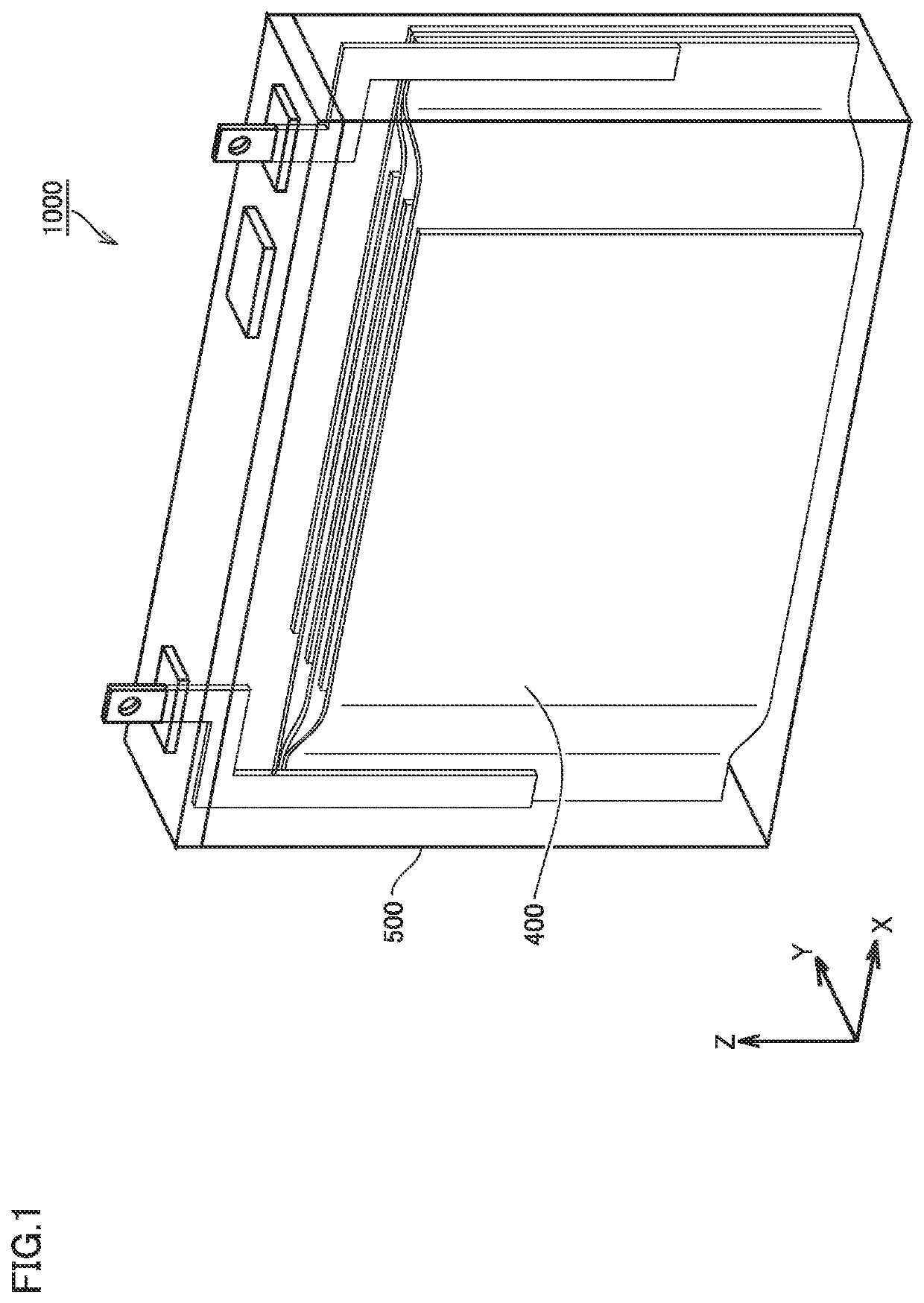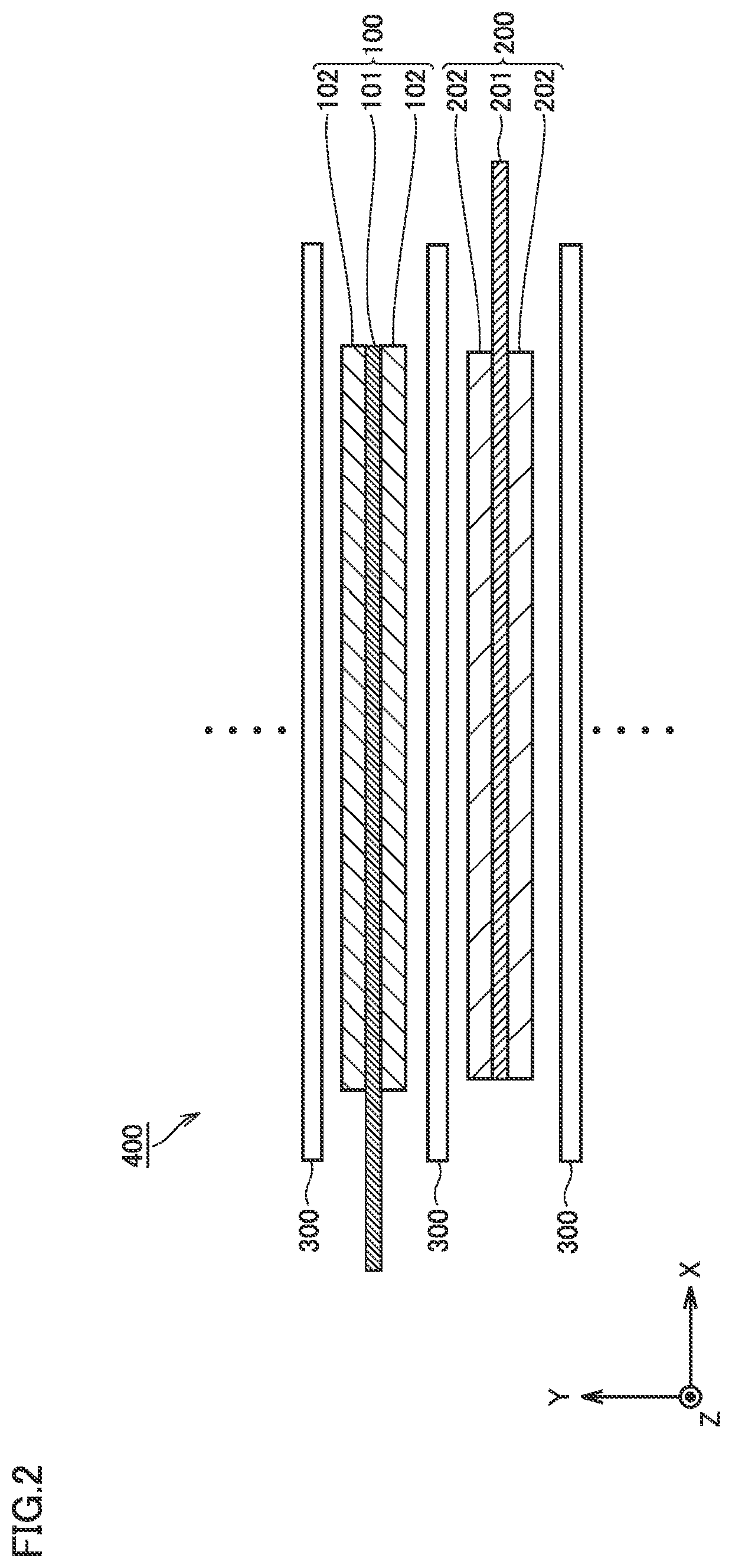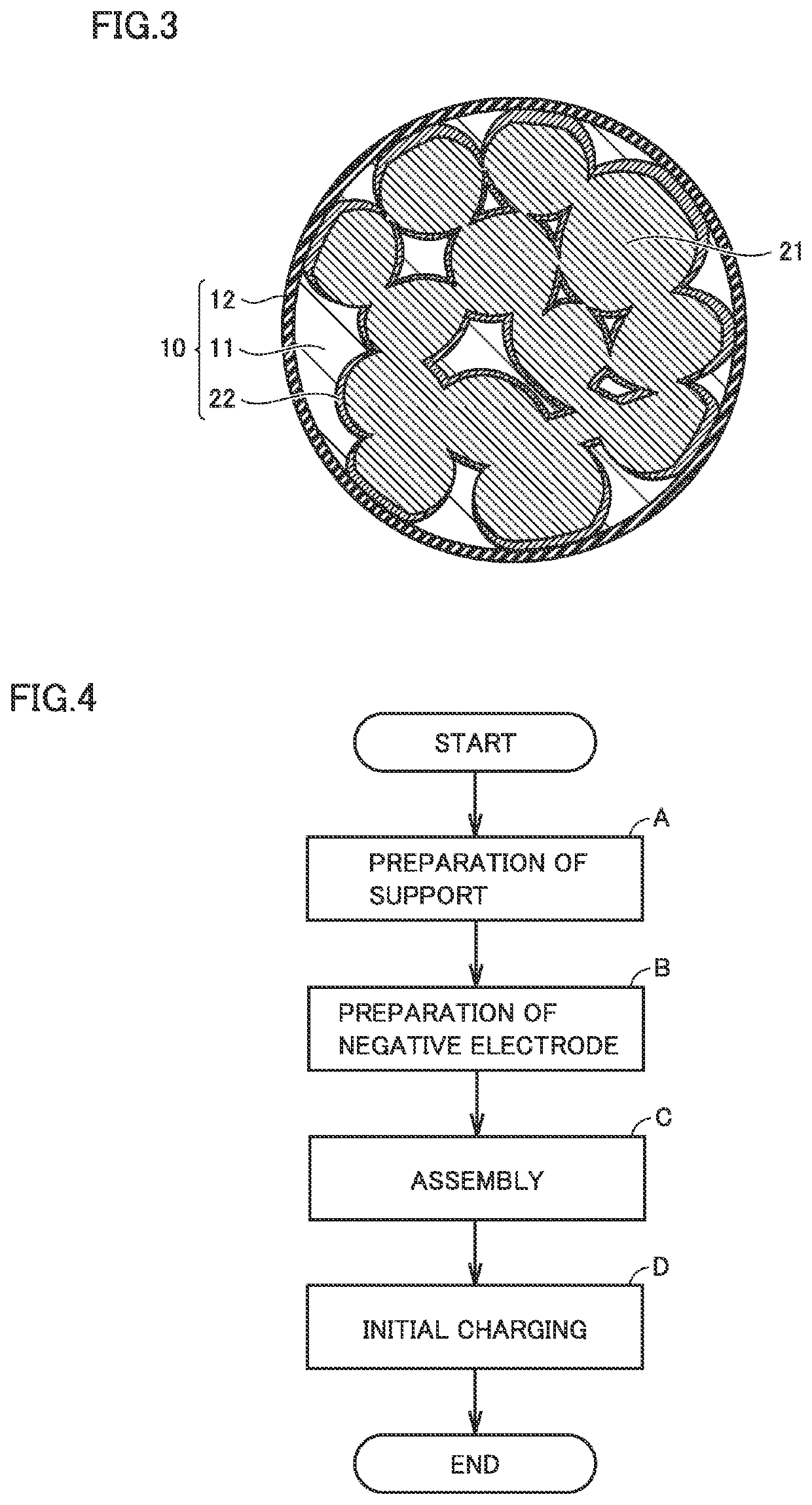Metal negative electrode secondary battery and method of manufacturing same
a secondary battery and metal technology, applied in the field can solve the problems of difficult control of a form of metal deposition, limited path for diffusing metal ions into the hollow inside the particle, and difficulty in charging and discharging reversibility of metal negative electrode secondary batteries, so as to improve charging and discharging reversibility and reduce the difficulty of discharging reversibility. , the effect of improving the charge and discharging reversibility
- Summary
- Abstract
- Description
- Claims
- Application Information
AI Technical Summary
Benefits of technology
Problems solved by technology
Method used
Image
Examples
example 1
[0124]>
[0125]The following material was prepared.
[0126]Support: “CNovel®” provided by Toyo Tanso with a BET specific surface area of 50 m2 / g and a whole pore volume of 2 ml / g
[0127]>
[0128]The following materials were prepared.
[0129]Binder: CMC and SBR
[0130]Solvent: water
[0131]Negative electrode collector: Cu foil
[0132]A slurry was produced by mixing the support, the binder, and the solvent. This slurry was applied onto a surface of the negative electrode collector and was dried, thereby forming the support layer. This support layer has a weight of 5 mg / cm2. In this way, the negative electrode was prepared.
[0133]>
[0134]The following materials were prepared.
[0135]Positive electrode active material: Li(Ni1 / 3CO1 / 3Mn1 / 3)O2
[0136]Conductive material: carbon black
[0137]Binder: PVDF
[0138]Solvent: NMP
[0139]Positive electrode collector: Al foil
[0140]A slurry was produced by mixing the positive electrode active material, the conductive material, the binder, and the solvent. This slurry was appl...
example 2
[0149]>
[0150]The following materials were prepared.
[0151]Resin material: aqueous polyvinyl alcohol solution
[0152]Metal oxide particles: MgO
[0153]A mixture was produced by mixing the resin material and the metal oxide particles.
[0154]>
[0155]The carbon particles were prepared by heating the mixture in a nitrogen atmosphere. It is considered that a plurality of metal oxide particles are dispersed in each of the carbon particles.
[0156]>
[0157]The carbon particle was cleaned in hydrochloric acid. The cleaning was performed to remove part of the metal oxide particles from the carbon particle. Accordingly, a plurality of open pores were formed in the carbon particle. In this way, the support was prepared. Except for these, the battery was assembled in the same manner as in Example 1.
[0158]>
[0159]The battery was charged to 4.2 V. On this occasion, the metal oxide particles (MgO) remaining in the open pores of the carbon particle were reduced to generate the second metal (Mg). It is considere...
example 3
[0160]>
[0161]The process until “(a2) Carbonization” was performed in the same manner as in Example 2, thereby producing carbon particles. A solution of an ion-conductive polymer (PVDF-HFP) was prepared. A solvent of the solution is NMP. It is considered that the ion-conductive polymer has a mass average molecular mass of more than or equal to 1,000,000. A fluid dispersion was prepared by dispersing the carbon particles in the solution of the ion-conductive polymer.
[0162]>
[0163]The carbon particles were collected by filtering the fluid dispersion. The outer surface of each of the carbon particles was coated with the ion-conductive polymer. Then, the process after “(a5) Formation of Open Pores” was performed in the same manner as in Example 2, thereby manufacturing a battery.
PUM
| Property | Measurement | Unit |
|---|---|---|
| BET specific surface area | aaaaa | aaaaa |
| thickness | aaaaa | aaaaa |
| thickness | aaaaa | aaaaa |
Abstract
Description
Claims
Application Information
 Login to View More
Login to View More - R&D
- Intellectual Property
- Life Sciences
- Materials
- Tech Scout
- Unparalleled Data Quality
- Higher Quality Content
- 60% Fewer Hallucinations
Browse by: Latest US Patents, China's latest patents, Technical Efficacy Thesaurus, Application Domain, Technology Topic, Popular Technical Reports.
© 2025 PatSnap. All rights reserved.Legal|Privacy policy|Modern Slavery Act Transparency Statement|Sitemap|About US| Contact US: help@patsnap.com



